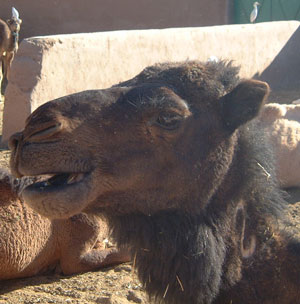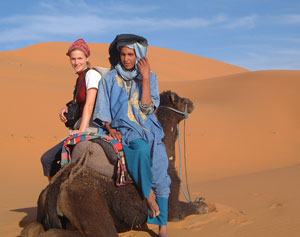|
|
|
|
Five centuries ago, Leo wrote about the Camel in quite a flattering way:  "
Camels are a peaceful domestic animal. They are quite numerous in Africa,
mostly in the deserts of Numidia, Libyia and Barbary. They are the wealth
of all Arabs. When one refers to the fortune of a prince, one says: "He
has so many thousands of camels" ; and not "He has so much money,
or so many posessions". "
Camels are a peaceful domestic animal. They are quite numerous in Africa,
mostly in the deserts of Numidia, Libyia and Barbary. They are the wealth
of all Arabs. When one refers to the fortune of a prince, one says: "He
has so many thousands of camels" ; and not "He has so much money,
or so many posessions". Every Arab who owns a camel is a free man, for these animals allow him to live in the desert where neither prince nor king can go due to the aridity. African camels are of the best quality, for they can carry their load for up to 40 or 50 days without being fed: every day, you unload them and let them roam about for wild grass, pines and branches. Before you start on a trip, the camel needs to be fat.
friendly
bird plucking flees from camel's head  Today,
people still talk about camels with flattering words, and it is not unusual
to hear flirting men offer to buy your beautiful blond friend for a few
thousand camels (they say one camel is worth nearly $1000). Today,
people still talk about camels with flattering words, and it is not unusual
to hear flirting men offer to buy your beautiful blond friend for a few
thousand camels (they say one camel is worth nearly $1000).
Click here to learn about my experiences with camels..oops dromaderies. Cause everyone knows that camels have TWO humps and dromaderies only ONE. |